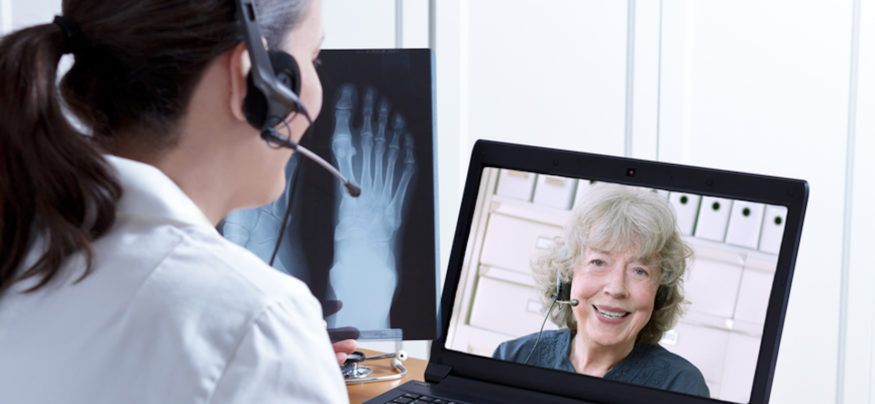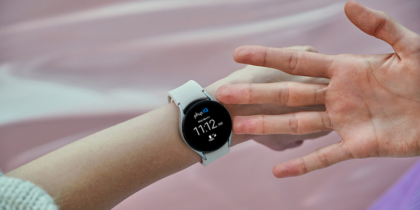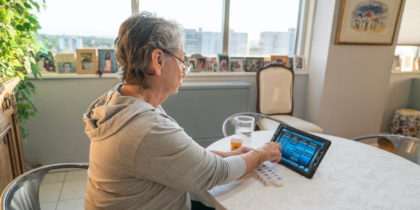As impressive as the development of virtual healthcare has been over the last few years, one of the biggest drags on the patient experience has been left largely unaddressed.
As patients, we all know that, while information, diagnostics and monitoring are important, diagnosis is the holy grail that breaks the tethers to the doctor’s office and makes real strides in improving the patient experience.
A New World of Healthcare for Patients
For patients who are aware of telehealth options, most see the service as something you use for addressing minor ailments like rashes and colds. However, a recent telehealth survey from American Well reveals a new world of excited patients that are ready to reach beyond itchy throats.
The study found that a full 60 percent of patients surveyed would be open to using telehealth to address even chronic conditions like heart disease and diabetes through regular check-ins. This is where the potential for full patient engagement begins to emerge.
When patients are able to integrate their healthcare into their lives, seeing it as less of a task and more of a simple and convenient reality, we begin building situations in which patients can feel truly empowered in their own care.
But what does this mean for the traditional physician-patient relationship?
One of the American Well study’s most crucial findings is that convenience might override loyalty when effective telehealth solutions are involved. In its poll of over 4,000 consumers, the majority of consumers indicated they were ready for telehealth technology and actively pursuing it, and 20 percent said they would switch from their current doctor to find one who did offer telehealth services, and that number jumped to 34 percent for people who have children.
This is an opportunity for physicians, if they’re willing to take the needs of the modern patient seriously and update their care offerings to address them. Among survey respondents who currently had a primary care physician, 65 percent indicated interest in video-based visits.
The survey also found that physicians who offered telehealth services might have a leg up on retaining patients over those who don’t, reinforcing telehealth as one of the most important patient-retention strategies physicians can have as we approach 2020.
A Complete Patient Solution
Telehealth, for some time now, has been largely piecemeal, and patients have been underexposed to its possibilities. But as technology is advancing and patient exposure to it increases, we’re seeing greater opportunities for telehealth solutions that serve as true substitutes for the traditional physician visit.
For example, when patients were asked which of three communication options would be most preferable (video, telephone or email), almost 70 percent said they trusted video to offer the most accurate diagnosis. While these results are largely common sense, they could also indicate that patients are beginning to take the potential benefits of newer technologies seriously.
That shift in attitude is crucial, because as more financial burden is shifted to patient responsibility, consumers will be more open to ways in which they can make their visits easier and more affordable.
Create a VR Healthcare Pain Management Program
Explore the key drivers of using VR for pain management and get tips for implementation. Download Now
The survey revealed that the majority of respondents (67 percent) delayed seeking care because of high costs, the difficulty in getting an appointment, being too busy or hoping whatever issue they were dealing with would resolve itself on its own. All of those situations ultimately result in disconnects between physicians and patients, and in the long-run, higher costs across the healthcare system.
The benefit of reducing costs and avoiding readmission is especially important to patients who have recently been discharged. These patients can avoid the inconvenience and financial burden of completely preventable occurrences (such as infection and medication adherence problems) through active and simple use of telehealth solutions. While 52 percent of respondents were interested in those services, the survey also illuminated potential for addressing prescription refills (78 percent), ER visits, (20 percent) and care coordination for an elder parent or relative (79 percent),
Building Physician Understanding
Since building trust is such an important factor in helping patients realize the full benefit of virtual healthcare, physicians will play a crucial role in the technology’s proliferation.
Physicians have the option of not only joining existing banks of patients (via employers and health plans) who are already open to virtual healthcare solutions, they can also access HIPAA compliant platforms to offer telehealth services directly to their existing patient rosters.
As patient demands shift in a quickly changing healthcare environment, keeping up with solutions that build patient engagement and connect directly with the most immediate care concerns of healthcare community will need to become a priority for all providers and healthcare organizations.
Epic’s Haiku app is also making an impact in the healthcare industry by allowing physicians to access patient data on the go.








